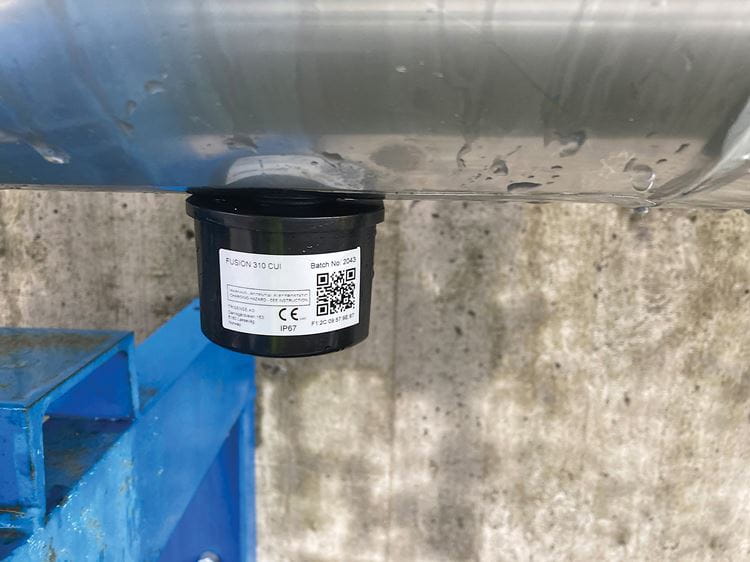Building automation
Industrial grade low power wireless connectivity for building automation and sensor networks

Nordic Semiconductor today announces that Trisense, a Bergen, Norway-based Internet of Things (IoT) technology company, has selected Nordic’s nRF9160 low power System-in-Package (SiP) with integrated LTE-M/NB-IoT modem and GPS to provide the wireless connectivity and processing power for its ‘Fusion 310 CUI Sensor’. The Industrial IoT (IIoT) solution helps customers in the hydrocarbon processing industry (HPI), such as oil and gas companies and refineries, to remotely monitor pipelines for corrosion under insulation (CUI). CUI is a costly yet avoidable issue that impacts steel piping, storage tanks, container vessels, and other process equipment within plants that are subject to extreme temperature fluctuations.
In operation, multiple Fusion 310 CUI Sensor units are installed at appropriate locations along critical stretches of a pipeline. Each unit integrates sensors measuring relative humidity, temperature, and water presence inside the insulation of cladded piping to detect abnormalities and predict the impending failure of a pipeline, as well as locate the position of the likely corrosion. This predictive maintenance system eliminates the need to dismantle and reassemble kilometers of cladding to inspect the full length of the pipe, allowing users to reduce the costs associated with the inspection and upgrade of insulated pipelines. The IP67-rated weatherproof Fusion 310 CUI Sensor is designed for use in hazardous areas and comes with ATEX/IECEx, Zone 0 certification.
Each device also integrates an nRF9160 SiP to provide LTE-M/NB-IoT connectivity to relay the sensor data to the cellular network and in turn to a Cloud-based platform for remote monitoring and analysis. This eliminates the need to deploy additional infrastructure such as a gateway. The SiP’s 64 MHz Arm® Cortex®-M33 processor and 1MB Flash and 256KB RAM offers ample computational power to not only support the LTE-M/NB-IoT cellular connectivity and enable rapid response to GPS location requests, but also manage and perform the complex proprietary algorithms required to support the multiple sensors.

Each Fusion 310 device is powered by two primary lithium batteries, providing a battery life of above ten years between replacement, with the solution’s significantly reduced power consumption achieved thanks in part to the low power capabilities of the Nordic SiP. The nRF9160 SiP is optimized for low power operation, supporting PSM and eDRX power saving modes. For example, in PSM mode, uploading 1kB every 12 hours, the average current is 5.5µA. When in sleep mode the average current is ~2µA. Target applications for the nRF9160 SiP include asset tracking, smart city, smart agriculture, industrial, smart metering, wearables, and medical solutions.
The nRF9160 SiP is certified for global cellular IoT applications, comprising a dedicated application processor and memory, multimode LTE-M/NB-IoT modem with integrated RF front end (RFFE), GPS, and power management in a compact 10 by 16 by 1mm package. Along with the processor and generous memory allocation, the SiP includes a range of analog and digital peripherals, automated power and clock management, Arm TrustZone® for trusted execution, and Arm CryptoCell™ 310 for application layer security. The processor communicates with the LTE modem through a BSD secure sockets API and supports the application layer protocol (for example CoAP, MQTT or LWM2M) and the application itself.
The nRF9160 SiP’s LTE modem supports both SIM and eSIM, offers 700 to 2200MHz LTE band support, 23dBm output power, and single pin 50 Ω antenna- and UICC-interfaces. The LTE stack layers L1-L3, IPv4/IPv6, TCP/UDP, TLS/DTLS are part of the modem firmware. Related products include the nRF9160 DK, a precertified single board development kit and the nRF Connect SDK, a software development kit which includes application layer protocols, application examples, and LTE modem firmware offered as precertified and precompiled downloads.
“The versatility and industry-leading low power consumption of Nordic’s nRF9160 SiP made it possible to design our Fusion 310 CUI sensor using only a single chip,” says Ronny Karlsen, CCO at Trisense. “We are excited to use Nordic’s nRF Connect SDK with excellent documentation and an extensive feature set to develop our firmware.”
Industrial grade low power wireless connectivity for building automation and sensor networks